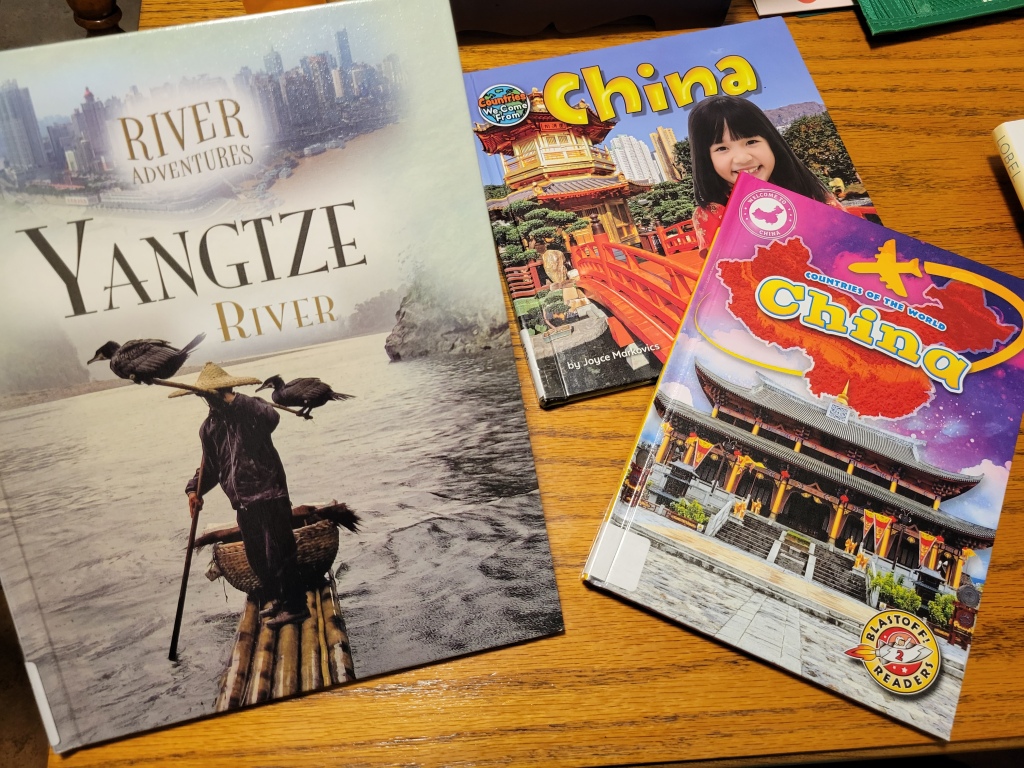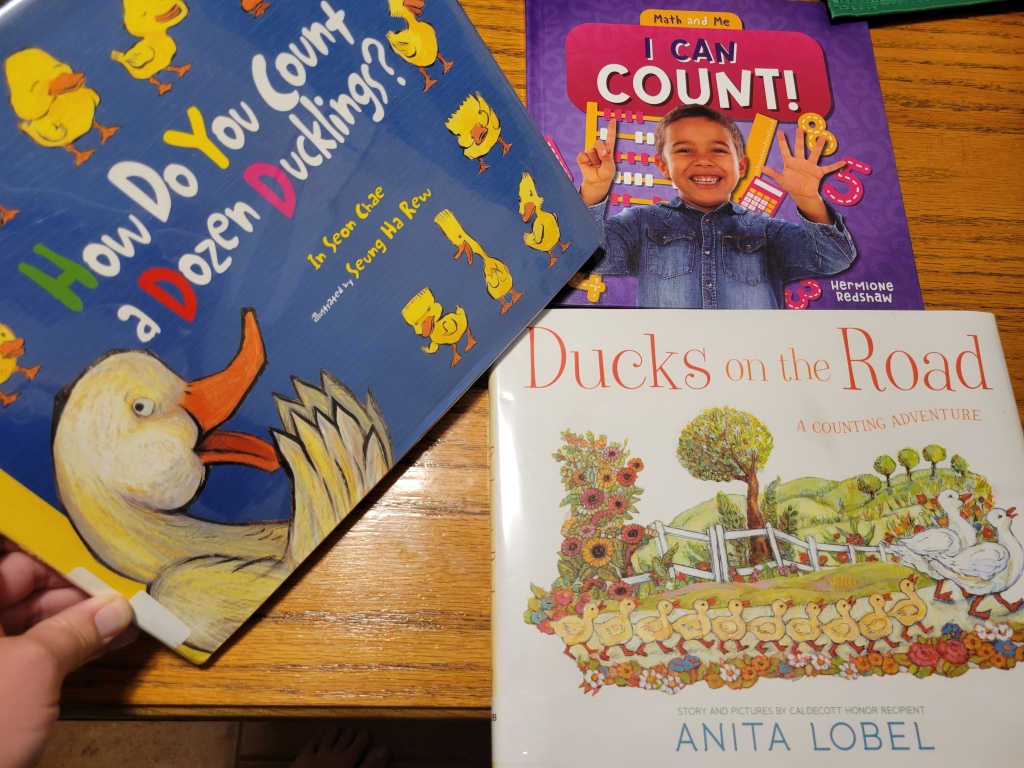
We started with the first book in Five in a Row Vol. 1. I’m going to tell you, I had a hard time with this book being on the list. I had a hard time because I have been to China, in a river city. I saw the cormorant fishing boats and the children running around the edge of the Li River, jumping into the water to cool off in the hot summer sun. It’s been a few years, but I know that the country is not as it is depicted in the book. Of course, I understand the book was written in 1933, BUT the racial undertones and the artist’s renders of the people and the countryside left a lot to be desired. So, I decided to take this book as a teaching tool in how we can look at older books and recognize problematic content. I decided that with my supplemental books and activities, I would do my best to present a more accurate and respectful picture of China and its people. Stories of Color has a great new list called “Read This, Not That” and “The Story About Ping” made the list of books NOT to read. Our library doesn’t have their suggested alternative, but it’s on my list to nab whenever it comes available!
Below you will find pictures of the books I used for the different subjects and additional books I found that fit for more read aloud time. At the bottom of the page are links to each book for purchase.
Social Studies

I found these books valuable in that they presented how China looks today. A lot of the country is still rural, as depicted in the book, but much of it has been highly developed and metropolitan. I appreciated the current pictures of the Yangtze River – showing that the waters are not, in fact, yellow. We also visited a local Chinese restaurant and discussed how the people who work there look nothing like the people in the book. We talked about how the book depicted a way of life in a much earlier time in history and a particular part of an extremely large and diverse country.
Math
Math is not my forte, but at this level, I really have no excuse for working it out. These books were perfect today. We read How Do you Count a Dozen Ducklings? together and for our bedtime read, we did Ducks on the Road. My little man (5 yrs) grouped the ducks in 3 and counted them easily that way. I was floored. Numbers are going to come easy for him like it does for his dad.
Math day is also our outdoor nature club day. We spent the afternoon with other homeschool friends, and amazing grown-up volunteers at a nearby state park. We always have great time there. Here’s hoping that we have a healthier year and are able to go more regularly throughout the winter.

Science

Oh this was a fun day! We did an experiment (provided in the book) where we picked a variety of objects and predicted whether they would sink or float. The kids did great and were surprised at some of the results. “Swim Swim Sink” was a perfect picture book tie-in.
This Safety Smart DVD with Timon and Pumbaa from The Lion King was a great watch while I got our lunches put together. Not too long, but memorable. We discussed what we already knew (from swimming lessons this summer) and what we didn’t know yet. I’m our designated family life guard for swimming outings. I’m glad I wasn’t rusty on the big points. We’re also going to try to trek out tomorrow for some wild duck observations, that is if we can get ahead of our ragweed allergies. The assault on our sinuses is strong this year!

Additional Reads

These three stories are very different in origin and setting. The Ugly Duckling is a classic, as is The Nightingale. I had these easy readers left over from my ESL tutoring years. “Along the Tapajós” follows two siblings on their way to school and their life on a Brazilian tributary to the Amazon River. This book was translated from Portuguese and I’m always glad to include stories from own voices.
The “Duck on a…” books found their way in my list and they’re silly enough that I knew my kiddos would love them. And they did. “I Am Golden” addresses the challenges that Third Culture Kids (specifically Chinese American) face belonging and not belonging to two different cultures. Another great Own Voice picture book.

We also memorized a poem by Jack Prelutsky called “Yellow-Bill Duck.” I found it in our “Tiger, Tiger, Burning Bright!” anthology of animal poems for each day of the year. The kids loved the repetition of it:
I’m a yellow-bill duck
with a black feather back,
I waddle waddle waddle,
and I quack quack quack!I dabble for my dinner
https://www.poetryfoundation.org/poets/jack-prelutsky
with a swish swish swish,
and I gobble gobble gobble
all I wish wish wish!
Have you used this book for homeschool or just a general read-aloud? How did you teach through it? What did your kids find most interesting?
Disclaimer: This site uses some affiliate links. This costs you nothing, but helps supplement our homeschooling costs.
Booklist:
- “Yangtze River” by Paul Manning
- “China” by Monika Davies
- “China” by Joyce Markovics
- “How Do You Count a Dozen Ducklings?” by In Seon Chae
- “I Can Count!” by Hermione Redshaw
- “Ducks on the Road” by Anita Lobel
- “Things That Float and Things That Don’t” by David A. Adler
- “Swim Swim Sink” by Jenn Harney
- “Ducks” by Meg Gaertner
- “First Words: Mandarin” by Lonely Planet Kids (I couldn’t find a link to the board book, but this is another version with 100 words)
- “Along the Tapajós” by Fernando Vilela
- “I Am Golden” by Eva Chen
- “Duck on a Bike” by David Shannon
- “Duck on a Tractor” by David Shannon

Leave a comment